Funny Comic Strip Ideas Lazarillo De Tormes
[abridged from wikipedia]
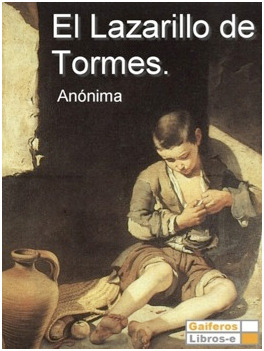
The Life of Lazarillo de Tormes and of His Fortunes and Adversities (Spanish: La vida de Lazarillo de Tormes y de sus fortunas y adversidades) is a Spanish novella, published in 1554 anonymously because of its heretical content.
Besides its importance in the Spanish literature of the Golden Age, Lazarillo de Tormes is credited with founding a literary genre, the picaresque novel, from the Spanish word pícaro, meaning "rogue" or "rascal". In novels of this type, the adventures of the pícaro expose injustice while amusing the reader. This extensive genre includes Cervantes' Rinconete y Cortadillo and El coloquio de los perros, Henry Fielding's Tom Jones and Mark Twain's Adventures of Huckleberry Finn. Its influence extends to twentieth century novels, dramas and films featuring the "anti-hero".
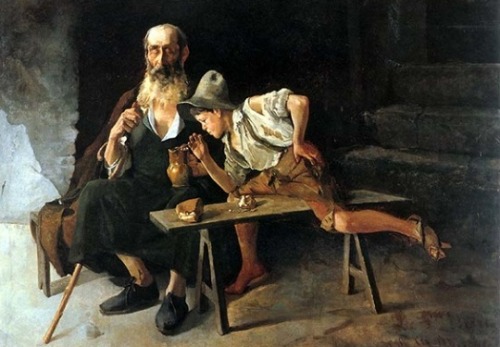
Summary
Lázaro is a boy of humble origins from Salamanca. After his stepfather is accused of thievery, his mother asks a wily blind beggar to take Lazarillo (little Lázaro) on as his apprentice. Lázaro develops his cunning while serving the blind beggar and several other masters, while also learning to take on his father's practice.
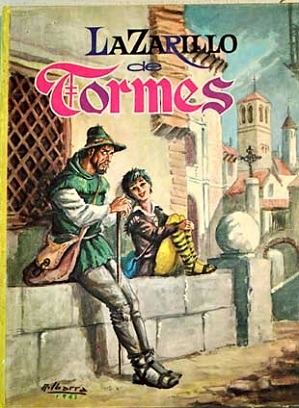
Prohibition
Lazarillo de Tormes was banned by the Spanish Crown and included in the Index of Forbidden Books of the Spanish Inquisition; this was at least in part due to the book's anti-clerical flavour. In 1573, the Crown allowed circulation of a version which omitted Chapters 4 and 5 [where Lazarillo serves a friar and a pardoner] and assorted paragraphs from other parts of the book. An unabridged version did not appear in Spain until the nineteenth century. It was the Antwerp version that circulated throughout Europe, translated into French (1560), English (1576), Dutch (1579), German (1617), and Italian (1622).
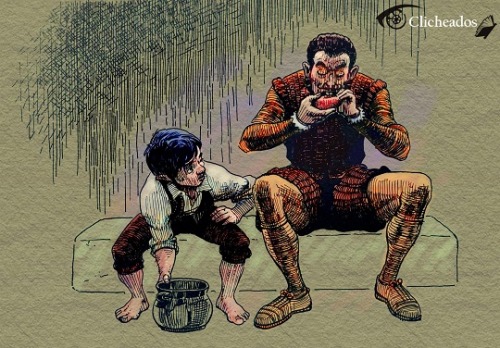
Literary significance and criticism
Primary objections to Lazarillo were to its vivid and realistic descriptions of the world of the pauper and the petty thief. This was in contrast to the superhuman events of chivalric novels such as the classic from the previous century, Amadís de Gaula. In Antwerp, it followed the tradition of the impudent trickster figure Till Eulenspiegel.
Lazarillo introduced the picaresque device of delineating various professions and levels of society. A young boy or young man or woman describes masters or "betters" with ingenuously presented realistic details. But Lazarillo speaks of "the blind man," "the squire," "the pardoner," presenting these characters as types.
In contrast to the fancifully poetic language devoted to fantastic and supernatural events about unbelievable creatures and chivalric knights, the realistic prose of Lazarillo described supplicants purchasing indulgences from the Church, servants forced to die with their masters on the battlefield (as Lazarillo's father did), thousands of refugees wandering from town to town, poor beggars flogged away by whips because of the lack of food.
The anonymous author included many popular sayings and ironically interpreted popular stories.

The Prologue with Lázaro's extensive protest against injustice is addressed to a high-level cleric, and five of his eight masters in the novel serve the church. Lazarillo attacked the appearance of the church and its hypocrisy, though not its essential beliefs, a balance not often present in following picaresque novels.
Besides creating a new genre, Lazarillo de Tormes was critically innovative in world literature in several aspects:
- Long before the Emile (Jean-Jacques Rousseau) or Oliver Twist (Charles Dickens) or Huckleberry Finn the anonymous author of Lazarillo treated a boy as a boy, not a small adult.
- Long before Moll Flanders (Daniel Defoe), Lazarillo describes the domestic and working life of a poor woman, wife, mother, climaxing in the flogging of Lazarillo's mother through the streets of the town after her black husband Zayde is hanged as a thief.
- Long before modern treatment of "persons of color", this author treats sympathetically the pleasures and pains of an interracial family in his descriptions of life with his black stepfather and negrito half-brother, though their characterization is based on stereotypes.
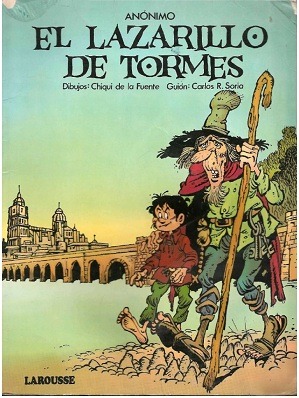
Criticism by the author
The author criticises many organisations and groups of persons in his book, most notably the Catholic Church and the Aristocracy.
These two organisations are clearly criticised through the different masters that Lazarillo serves. Characters such as the Cleric, the Friar, the Pardoner, the Priest and the Archbishop all have something wrong either with them as a person or with their character. The self-indulgent cleric concentrates on feeding himself, and when he does decide to give the "crumbs from his table" to Lazarillo, he says, "take, eat, triumph – the world is yours" a clear parody of a key communion statement.
In Chapter 3, Lazarillo becomes the servant of an "Escudero" or squire. The Escudero openly flaunts wealth despite not being able to feed himself, let alone Lazaro. This is a parody of the importance of having a strong image among the nobility.

Text
PDF: English translation by Thomas Roscoe (London, 1881), along with Mateo Alemán's Guzmán de Alfarache"or The Spanish Rogue".
Project Gutenberg / HTML text: English translation by Robert Rudder (1973), along with The Life of Lazarillo of Tormes, Part Two.
HTML text: Original Spanish text / Biblioteca Virtual Miguel de Cervantes
Source: https://antoray22.tumblr.com/post/155091393056/lazarillo-de-tormes-perhaps-the-original-rogue-in
0 Response to "Funny Comic Strip Ideas Lazarillo De Tormes"
Post a Comment